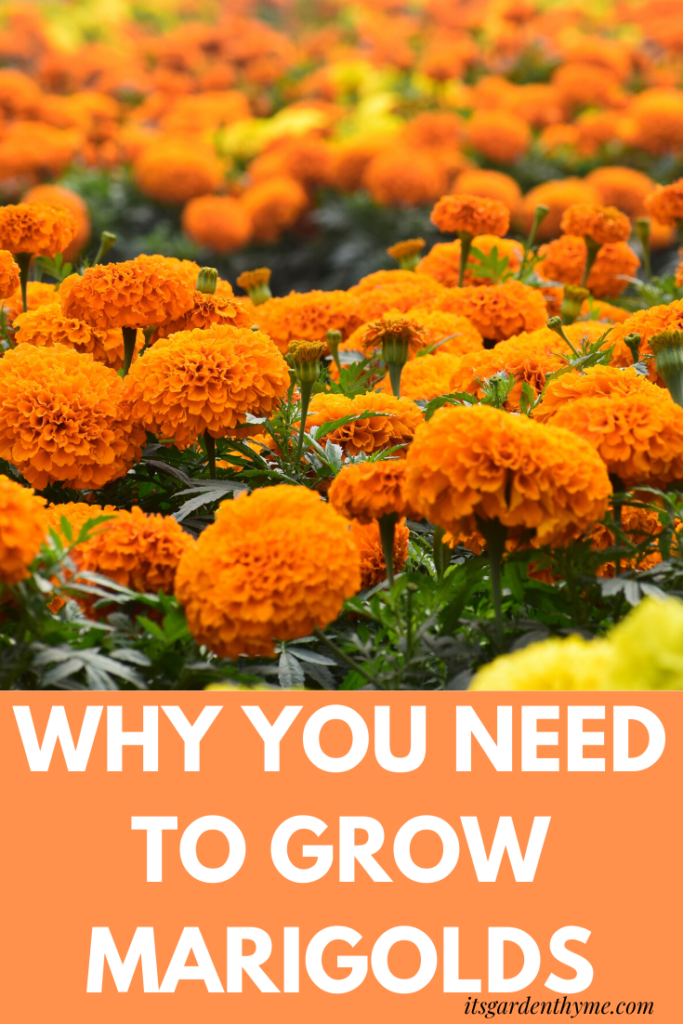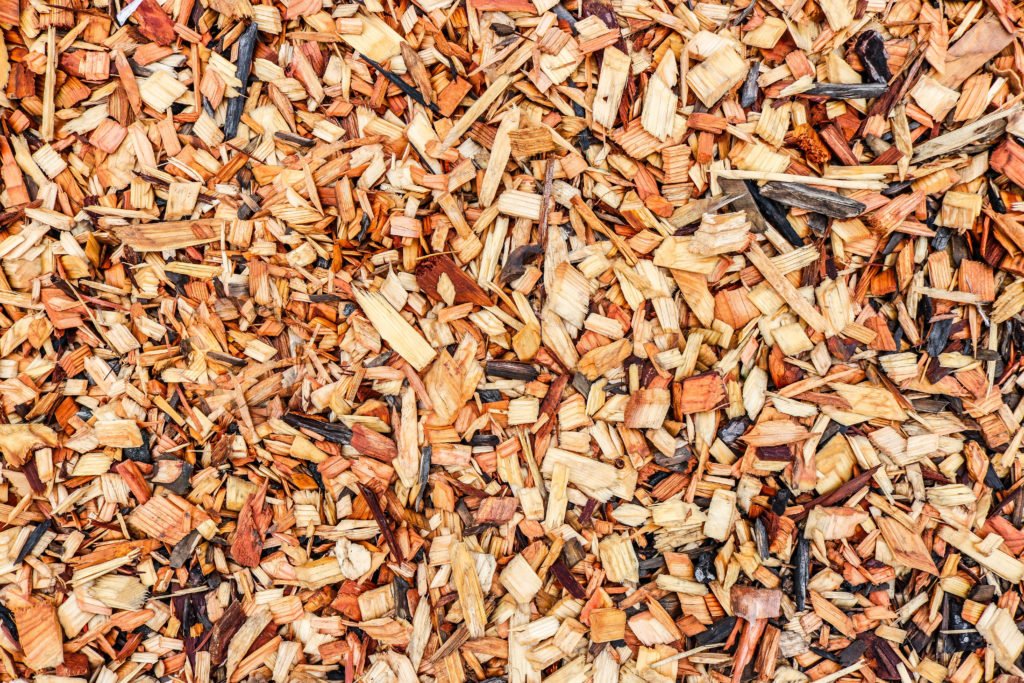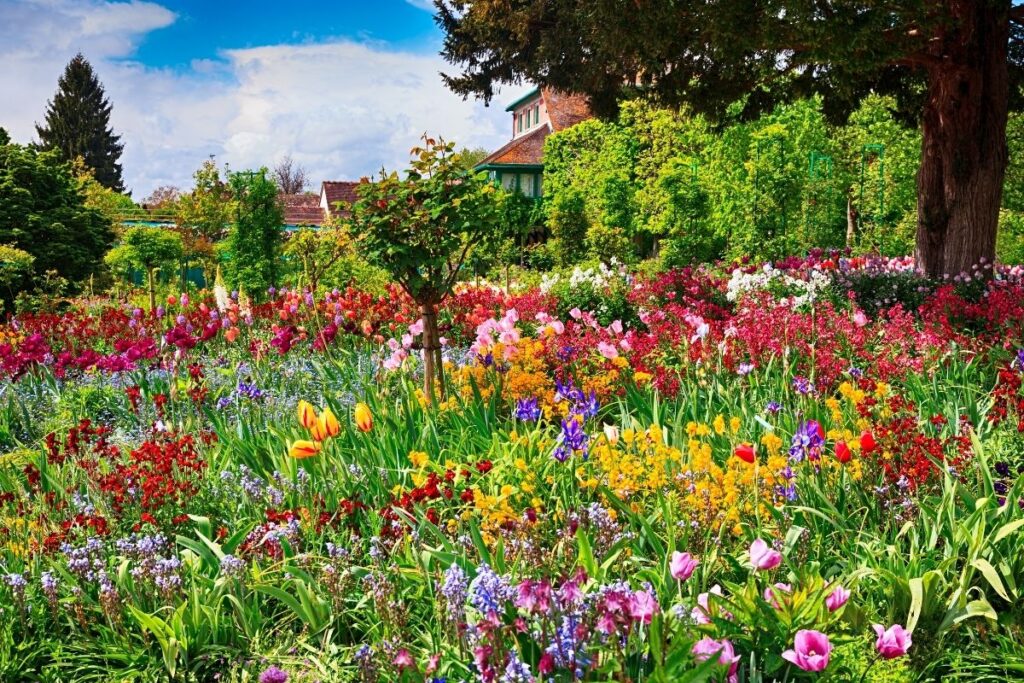Marigolds are one of the most popular flowers in the world. And for good reason! These beautiful blooms add color and life to any garden. In addition to their beauty, marigolds are also easy to care for and relatively low maintenance.
There are so many benefits of growing marigolds. They have long been heralded as a flower of choice for both flower and vegetable gardens and many gardeners grow marigolds because of their ability to deter pests.
Marigolds are such a wonderful flower to grow, especially if you are just starting a garden, or prefer a low maintenance option. They have a beautiful array of colors in all shades of vibrant orange, soft yellow, and striking red.
Types of Marigolds
Did you know there are over 50 species of this particular flower?! Who knew this lovely little plant offered so much variety.
There are so many types of marigolds, which is great when you want to add dimension and depth of color to your garden. Here are a few of my favorites, and most common varieties:
French Marigold
These are the most common type of marigold, and what most people think of when they picture this flower. French marigolds grow to be about 12” tall and have double rows of petals in shades of yellow, red, and orange. Good for edging a garden as they don’t spread and stay small.
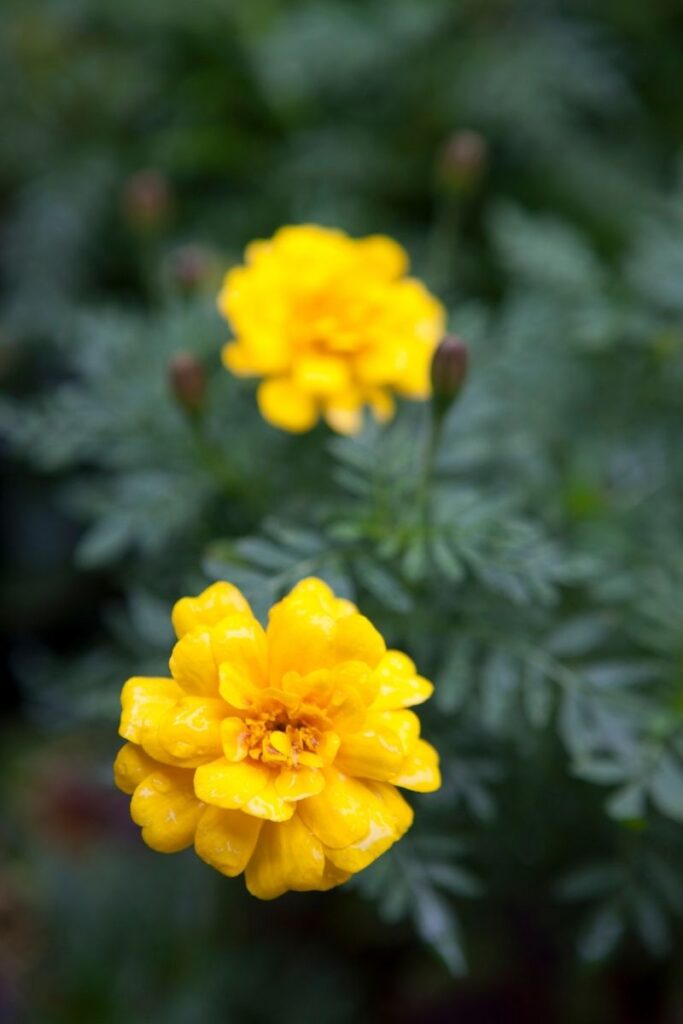
Calendula
(Common or Scotch Marigold)
I love this flower for its stunning petals and beautiful height, which can grow to around 3 feet. They have gorgeous round flower heads and spread open to show a deep eye in the center. Typically orange and perfectly ornamental.
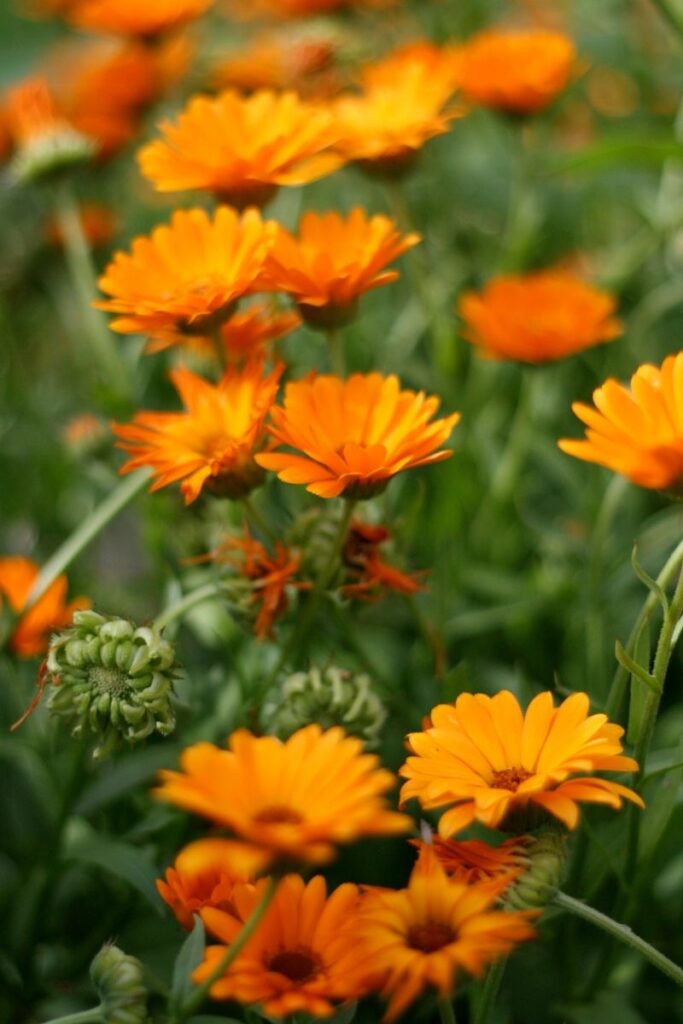
African Marigolds
(Mexican Marigold or Aztec)
These marigolds can get quite large, sometimes reaching up to 36” in height! I love this type of Marigold as they are the so full with cute flowers that look like little round poofs! African marigolds are characterized by their big, bright blooms in shades of yellow, orange, and red.
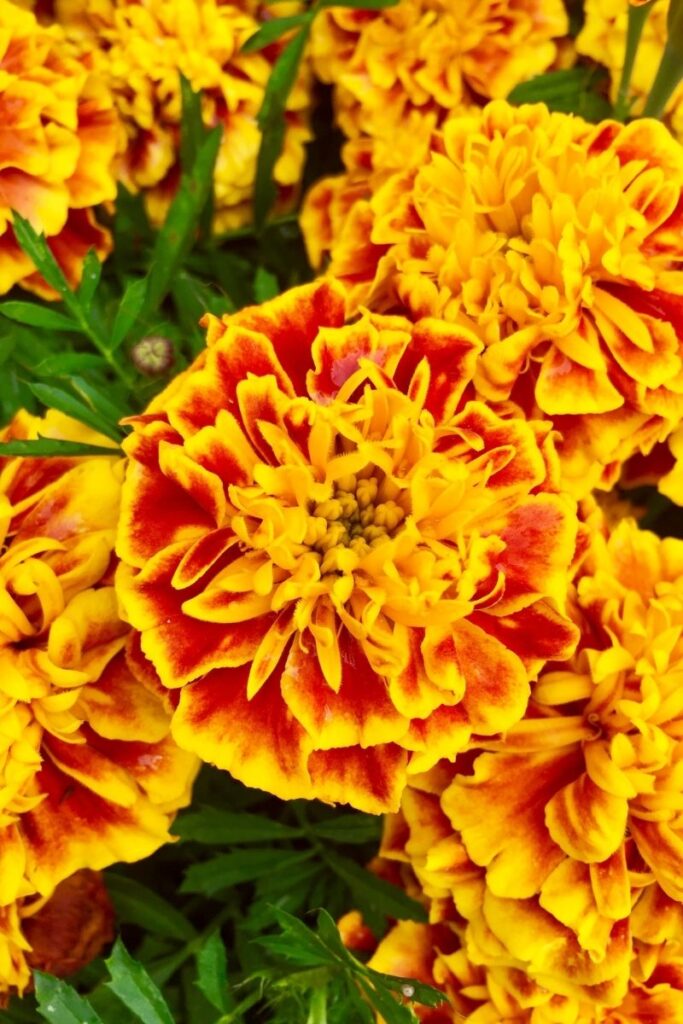
Signet Marigold
These are sweet and a bit different in style than the others. They don’t have as full of a flower but rather have five larger petals. This type of marigold is much smaller than the others, growing to only about 6” tall. They have a more subdued color palette with soft yellows and oranges.
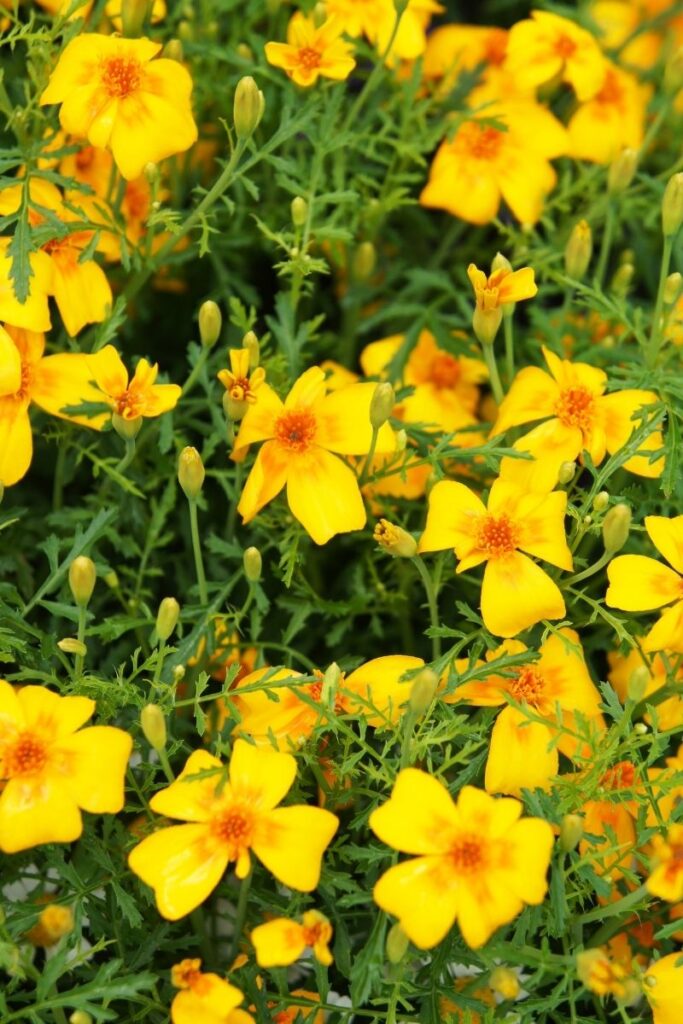
Are Marigolds Annuals or Perennials?
Marigolds are annuals, meaning they last one growing season and then die. However, in some warmer climates, they may behave as a perennial and come back year after year.
Where Do Marigolds Grow Best?
You absolutely want to be growing marigold flowers in a sunny location that will receive about 90% sunlight a day. While they can grow in a shaded space, they won’t thrive and you will not reap the benefits of these beauties.
Definitely aim to place them where they will get lots of light as they prefer full sun but will tolerate some partial shade, especially in hot summer areas.
When planting marigold plants, allow for about 18-20 inches of space between seedlings. You will want to consider their growth and span and let them flourish with lots of space between them.
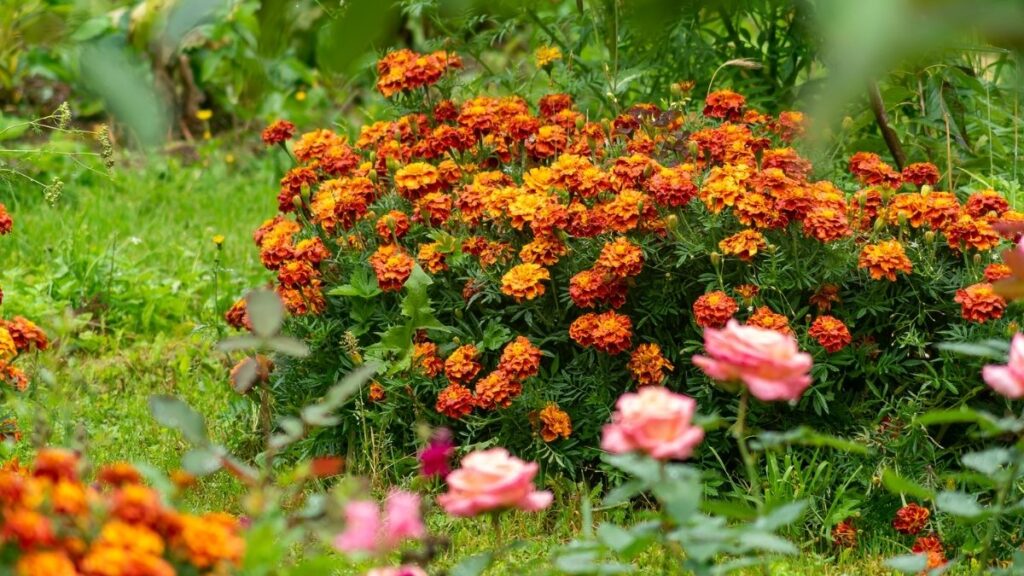
This post contains affiliate links. If you click through and make a purchase, I may earn a commission, at no additional cost to you!
If you’re transplanting your flower from a seed growing pot you have two options depending on your soil composition and assuming you have an established root system. For dense, clay-like soil (like mine) dig a hole that is double the size of your little seedling.
If you have loose, airy or loamy soil, you don’t need to dig a much bigger than the current size, just enough to allow for some soil to settle in and help establish the roots.
I would encourage you to plant your seeds directly into the ground. They are nearly fail-proof!
When Should You Plant Marigolds?
Here in zone 10b, I like to plant my marigolds around the same time I plant my spring vegetable garden – around the middle of March or by the first week of April. If you have a longer growing season, you can plant them earlier. Marigolds are sensitive to frost so if you get frost in your area, wait until after the last frost to plant.
How to Grow Marigolds
Marigolds can be started from seed or transplants. If you are starting from seed (perhaps the ones you saved from last year?), simply scatter the seeds on top of well-draining soil and lightly press them into the surface. Keep the area moist until germination occurs.
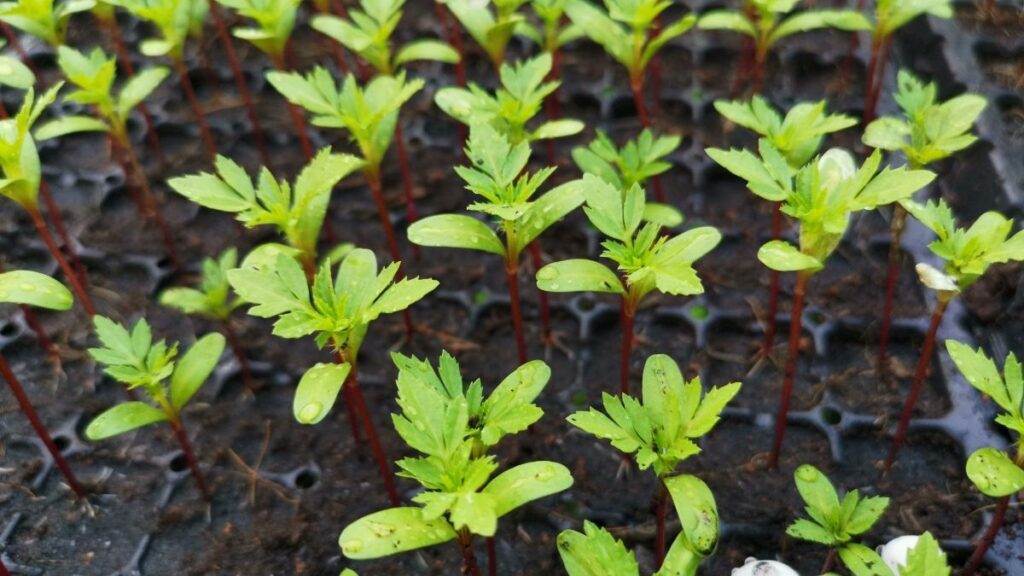
How to grow marigold seedlings
- Start the seeds indoors 6-8 weeks before the last frost. Marigolds are a warm-season annual, so they need to be started indoors if you live in a cold climate. Fill a seed tray with a light, well-draining potting mix and press the seeds into the soil about 1/4 inch deep. Water the seeds lightly and cover the seed tray with plastic wrap or a clear lid. Place the seed tray in a warm, sunny spot and keep the soil moist. The seeds should germinate in 7-10 days.
- Thin the seedlings once they have two sets of leaves. Once the seedlings have two sets of leaves, thin them out so that there is about 2-3 inches of space between each plant. You can either transplant the extra seedlings into another pot or container, or you can discard them.
- Harden off the seedlings before planting them outdoors. Once the weather has warmed up and the last frost has passed, you can start to harden off the seedlings. This means gradually exposing them to the outdoors over a period of several days. Start by placing the seedlings in a shady spot outdoors for a few hours each day. Gradually increase the amount of time they spend outdoors each day until they are able to be left outside overnight.
- Plant the seedlings in the garden. Once the seedlings have been hardened off, you can plant them in the garden. Choose a spot that gets full sun and has well-draining soil. Space the plants about 10-12 inches apart. Water the plants well after planting.
With a little care and attention, you can easily grow beautiful marigold seedlings from seed
Once established, marigolds don’t need much fertilizer but will benefit from a light application of an all-purpose fertilizer every few weeks during their growing season.
Watering Marigolds
Marigolds are very easy to grow and do well in most any type of soil except for waterlogged or boggy conditions.
Marigolds are pretty drought-tolerant plants but will perform and flower better with consistent watering, especially during hot, dry spells. Water them deeply about once a week, making sure the soil is moist several inches below the surface.
If you choose to grow marigolds in containers, they will need to be watered more frequently – probably every few days or so. Be sure to check the soil before watering as it will dry out faster in containers than in the ground.
They can be susceptible to root rot and other issues due to overwatering. Feel free to add a light layer of your choice of mulch, but not too much as you’ll lock in too much moisture for too long. In addition, aim to water the soil, not the flower.
Pests and Diseases of Marigolds
Marigolds are fairly hearty plants and don’t often succumb to too many pests (they actually help deter many pests!) or diseases but there are a few things to watch for.

Aphids, whiteflies, and spider mites may attack your plants, especially if they are stressed from lack of water or nutrients. These pests can be controlled with a strong stream of water from the hose, insecticidal soap, or neem oil.
Powdery mildew and gray mold (botrytis blight) can also be problems, especially in cooler, wetter weather. These fungal diseases will cause the leaves to turn yellow and die. To prevent them, make sure your plants have good air circulation and aren’t overcrowded. If you do get powdery mildew or botrytis blight, you can treat it with a fungicide containing sulfur or neem oil.
Harvesting Marigold Flowers
You can begin harvesting marigolds when the flowers are just beginning to open. For fresh flowers, cut the stems long and place them in a vase of water. Change the water every day or so and recut the ends of the stems.
Marigolds will continue to bloom throughout the summer and into fall if you deadhead them – that is, remove spent flowers before they go to seed. To deadhead, simply snip off the flower head with a sharp pair of shears.
How to Harvest Marigold Seeds
If you love the variety you have or just want to save some money, you can also let your marigolds go to seed at the end of the season and save them to plant again next year. The seeds will ripen about 90 days after planting.
To harvest marigold seeds, allow the flower heads to fully dry on the plant. You want them to be brown and crispy.

Then you can simply cut off the head and peel it open over a brown paper bag, collecting the seeds easily.
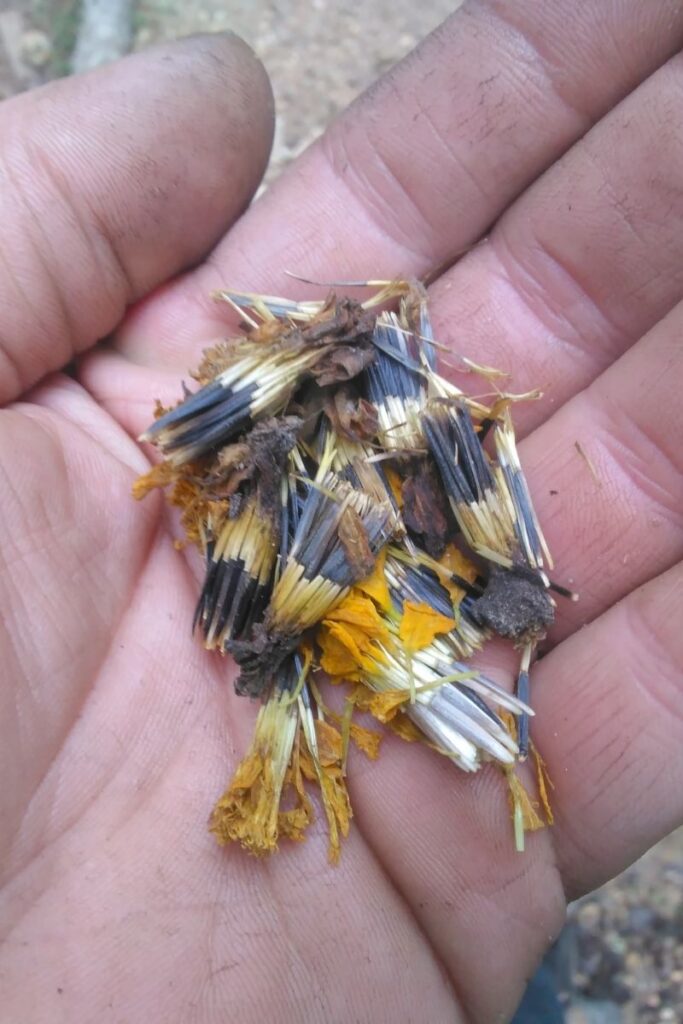
Store the seeds in a cool, dry place until you are ready to plant them next season.
Other Uses and Benefits of Growing Marigold Flowers
In addition to being beautiful flowers in your garden, marigolds also have a few other useful purposes.
Did you know that these gorgeous flowers are edible? They are! You’ll often see them sprinkled on dishes to add a pop of color, like a salad. They do best on food when they don’t get fully absorbed into a dish, but rather act as a decoration.
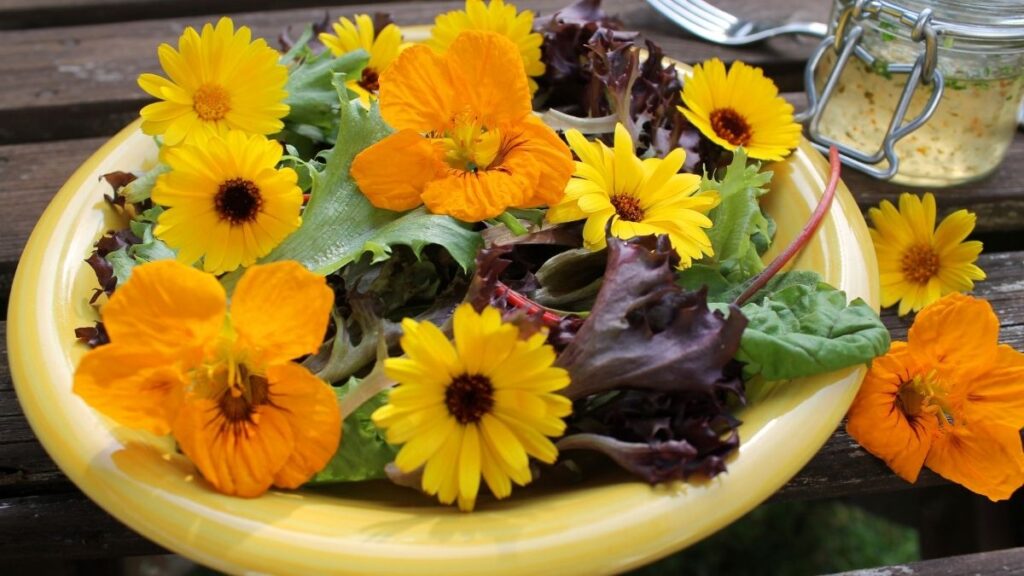
Aside from their culinary dazzle, one of my absolute favorite functions of these plants is their ability to repel insects. Bugs like aphid, mosquitoes, flies, and other nasty little pests that may otherwise damage your gardens – and rabbits too! Companion plant them near your tomatoes, peppers, eggplant, cabbage, and potatoes – pretty much any vegetable that is susceptible to pests.
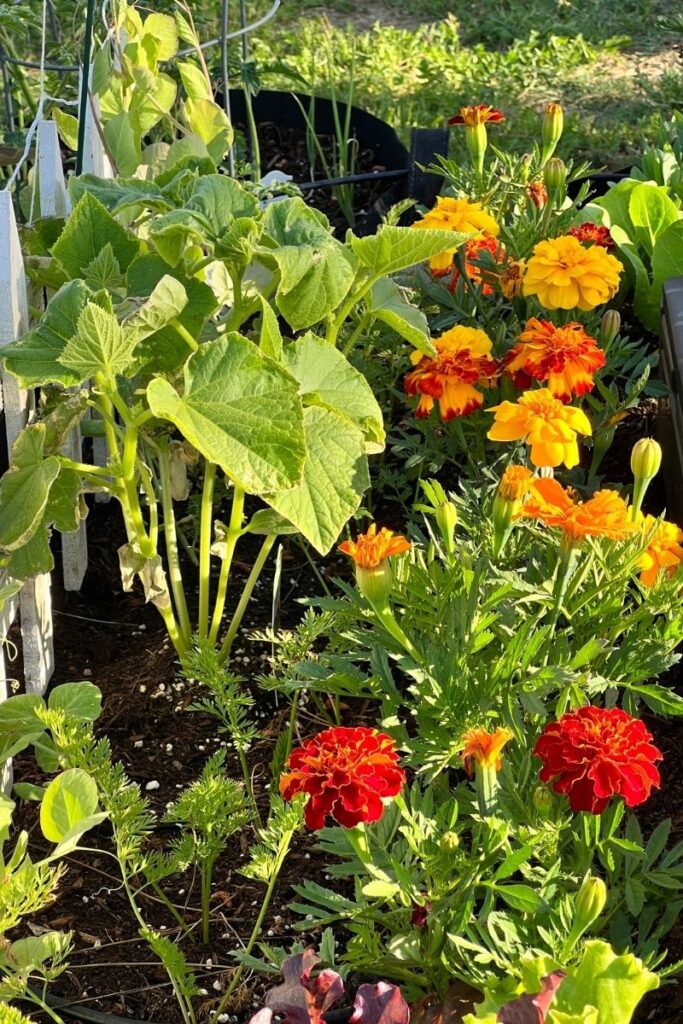
Another benefit is that they attract beneficial insects and pollinators like bees, butterflies, and other flying insects that will actually help your garden grow and produce!
For the extra crafty, marigold flowers can be used as a dye in foods and fabrics. Just simmer the petals in water for about 30 minutes, strain out the solids, and you have a beautiful yellow dye.
Whether you are growing them for their beauty, to keep pests away, or to make natural dyes, marigolds are a great addition to any garden!
More Gardening Articles You’ll Love:

